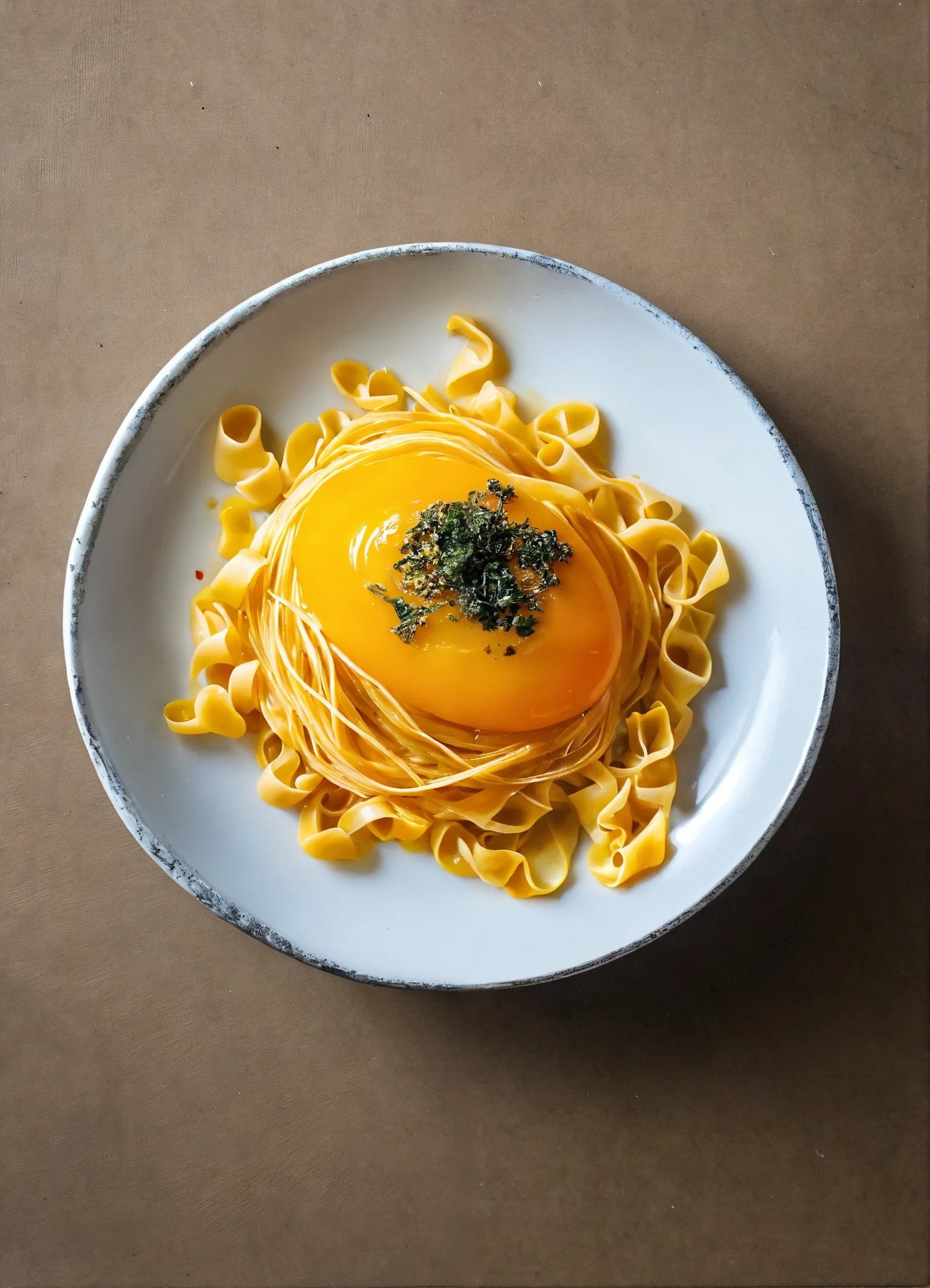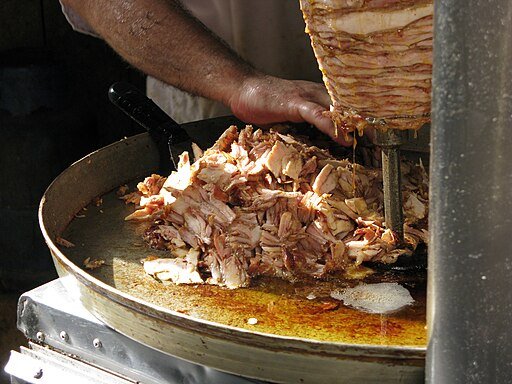Cured egg yolk has been gaining popularity in recent years, especially in the culinary world. This unique ingredient offers a rich, savory flavor that can enhance a variety of dishes, from salads to pastas to sandwiches. But what exactly is cured egg yolk, and how is it made?
Cured egg yolk is essentially a preserved egg yolk that has been treated with salt and sometimes sugar, and then dried. The process of curing the yolk not only adds flavor, but also changes the texture, making it firmer and easier to grate or crumble.
Cured egg yolk has a deep, umami flavor that can be compared to Parmesan cheese or soy sauce. It can be used as a seasoning or garnish, adding a burst of flavor and richness to any dish.
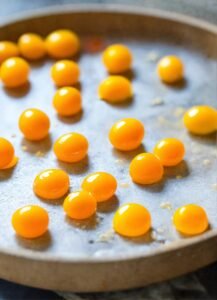
To make cured egg yolk, the yolks are separated from the whites and placed in a mixture of salt and sugar.
The yolks are then covered and left to cure in the refrigerator for several days, until they are firm and dry.
The cured yolks can be grated or crumbled over dishes, adding a unique flavor and texture.
Cured egg yolk is a versatile ingredient that can be used in a variety of dishes, and is a great way to add depth and complexity to your cooking.
History of Cured Egg Yolks
Cured egg yolks are a popular ingredient in many cuisines around the world.
The curing process involves preserving the egg yolks by salting and dehydrating them, resulting in a concentrated and flavorful ingredient that can be grated or shaved over dishes.
The history of cured egg yolks dates back centuries ago. In ancient China, salted egg yolks were used as a way to preserve eggs for long periods of time.
The technique eventually spread to other parts of Asia, where it became a popular ingredient in many dishes.
In Europe, cured egg yolks were traditionally used in Italian cuisine, where they are known as “bottarga.” Bottarga is made from the roe of tuna or mullet, but the technique of curing egg yolks is similar.
It was often grated over pasta dishes or used as a seasoning in soups and stews.
In recent years, cured egg yolks have gained popularity in the United States and other Western countries. They are often used as a garnish on dishes such as salads, pastas, and sandwiches, adding a rich umami flavor and a pop of color.
Overall, the history of cured egg yolks spans across different cultures and cuisines, with each region adding its own unique twist to the technique. Today, cured egg yolks continue to be a versatile ingredient in many dishes around the world.
Basic Ingredients
Cured egg yolk is a delicious and versatile ingredient that can add flavor and texture to a variety of dishes. The basic ingredients required to make cured egg yolk are simple and easy to find.
To make cured egg yolk, you will need:
- Fresh eggs
- Salt
The simplicity of the ingredients is what makes cured egg yolk so appealing. The quality of the eggs is important, so it is recommended to use fresh, high-quality eggs.
The amount of salt used in the curing process can vary depending on personal preference and the recipe being used. A general rule of thumb is to use about 1/4 cup of salt per cup of egg yolks.
It is worth noting that some recipes may call for additional ingredients such as sugar, spices, or herbs to add flavor to the cured egg yolks. However, these are not necessary for the basic recipe.
Overall, the basic ingredients for cured egg yolk are simple and easy to find. With just fresh eggs and salt, you can create a delicious and versatile ingredient that can be used in a variety of dishes.
Curing Process

Mixing the Cure
To begin the process of curing egg yolks, the first step is to create a curing mixture. This mixture typically consists of a combination of salt and sugar in a 1:1 ratio.
Additional seasonings, such as black pepper or smoked paprika, can also be added to enhance the flavor of the cured yolks.
The curing mixture should be mixed together thoroughly in a bowl. It is important to ensure that the mixture is evenly distributed, as this will ensure that the yolks cure evenly.
Curing Time
Once the curing mixture has been mixed together, the yolks can be added to the mixture.
The yolks should be gently placed on top of the curing mixture and then covered with additional curing mixture.
The curing time for the yolks will vary depending on the desired level of firmness. Typically, the yolks should be cured for 3-5 days. It is important to flip the yolks over every 12 hours to ensure that they cure evenly.
Rinsing and Drying
After the curing time has elapsed, the yolks should be removed from the curing mixture. They should be rinsed under cold water to remove any excess curing mixture.
Once the yolks have been rinsed, they should be dried thoroughly. This can be done by placing them on a wire rack and allowing them to air dry for several hours. Alternatively, they can be placed in a dehydrator set to 150°F for 2-3 hours.
Once the yolks have been dried, they can be grated or sliced and used as a flavorful addition to many dishes.
Herbs and Spices
Cured egg yolk is a versatile ingredient that can be used to add a unique flavor to a variety of dishes.
One way to enhance the flavor of cured egg yolk is to add herbs and spices during the curing process. Some popular herbs and spices that can be used include thyme, rosemary, garlic, and black pepper.
Thyme and rosemary add a subtle, earthy flavor to the cured egg yolk, while garlic and black pepper provide a more robust and spicy taste.
To incorporate these herbs and spices, simply mix them with the salt and sugar mixture used for curing the egg yolks. The result is a flavorful cured egg yolk that can be grated over salads, pastas, and other dishes.
Infused Cures
Another way to add flavor to cured egg yolk is to use infused cures. Infused cures involve adding a liquid, such as soy sauce or Worcestershire sauce, to the curing mixture.
The liquid is absorbed by the egg yolk during the curing process, resulting in a unique and flavorful cured egg yolk.
Soy sauce is a popular choice for infused cures as it adds a savory umami flavor to the egg yolk.
Worcestershire sauce, on the other hand, provides a tangy and slightly sweet taste. Other liquids that can be used for infused cures include balsamic vinegar, honey, and maple syrup.
Infused cures can be customized to suit individual tastes, and the possibilities are endless. By experimenting with different liquids and flavor combinations, one can create a truly unique and flavorful cured egg yolk.
Uses in Cuisine
Cured egg yolk is a versatile ingredient that can be used in a variety of dishes to add unique flavor and texture. Here are some common uses in cuisine:
- Grated over pasta dishes: Cured egg yolk can be grated over pasta dishes such as carbonara or spaghetti alle vongole to add a rich, salty flavor.
- As a garnish: Cured egg yolk can be sliced or grated and used as a garnish on salads, soups, or other dishes to add a pop of color and flavor.
- In sauces: Cured egg yolk can be used to make sauces such as aioli or hollandaise, adding a rich, creamy texture and a salty flavor.
- As a coating: Cured egg yolk can be ground into a powder and used as a coating for meats or vegetables, adding a unique flavor and texture.
Cured egg yolk is also a popular ingredient in modernist cuisine, where it is used to create unique textures and flavors in dishes such as foams and emulsions.
Overall, cured egg yolk is a versatile ingredient that can add depth and complexity to a wide range of dishes.
Storage and Preservation
Cured egg yolk can last for several months if stored properly. Here are some tips to ensure the longevity of your cured egg yolks:
- Store the cured egg yolks in an airtight container to prevent moisture and odors from affecting their quality.
- Keep the container in a cool, dry place, away from direct sunlight.
- If you want to extend the shelf life of your cured egg yolks even further, you can store them in the refrigerator or freezer.
When storing cured egg yolks in the refrigerator or freezer, it’s important to take the following steps:
- Wrap each cured egg yolk in parchment paper or plastic wrap to prevent them from sticking together.
- Place the wrapped cured egg yolks in an airtight container or freezer bag to prevent freezer burn or contamination from other foods.
- Label the container or bag with the date of storage to keep track of their freshness.
It’s important to note that the texture of the cured egg yolk may change slightly after being frozen, but it will still be safe to eat. To thaw frozen cured egg yolks, simply remove them from the freezer and let them sit at room temperature for a few hours.
By following these storage and preservation tips, you can enjoy the rich, savory flavor of cured egg yolks for months to come.
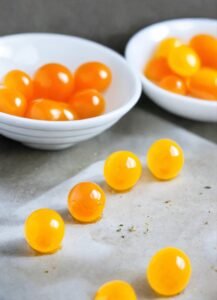
Health and Nutrition
Cured egg yolk is a highly nutritious food that is rich in protein, healthy fats, and essential vitamins and minerals. Here are some of the key health benefits of consuming cured egg yolk:
High in Protein
Cured egg yolk is a great source of protein, which is essential for building and repairing muscles, tissues, and cells. One large cured egg yolk contains around 6 grams of protein, which is equivalent to the amount of protein in one small chicken breast.
Rich in Healthy Fats
Cured egg yolk is also high in healthy fats, including monounsaturated and polyunsaturated fats, which can help improve heart health and reduce the risk of chronic diseases. One large cured egg yolk contains around 5 grams of fat, of which 2 grams are saturated.
Packed with Vitamins and Minerals
Cured egg yolk is a good source of several essential vitamins and minerals, including vitamin A, vitamin D, vitamin E, and calcium. These nutrients are important for maintaining healthy bones, teeth, skin, and eyes, as well as supporting immune function and overall health.
Overall, cured egg yolk can be a healthy addition to a balanced diet, offering a range of important nutrients in a delicious and versatile form.
Troubleshooting Common Issues
Cured egg yolk is a delicious and versatile ingredient that can be used in a variety of dishes.
However, there are some common issues that can arise when making cured egg yolk. Here are some troubleshooting tips to help you avoid these problems and get the best results.
Yolk is too salty
If your cured egg yolk is too salty, it may be because you used too much salt in the curing process. To avoid this issue, be sure to measure your salt carefully and use the recommended amount.
If your yolk is already too salty, you can try soaking it in water for a few hours to remove some of the salt. Alternatively, you can grate the yolk and use it sparingly in dishes to avoid overpowering the other flavors.
Yolk is too soft or runny
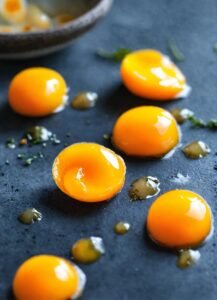
If your cured egg yolk is too soft or runny, it may not have been cured long enough. To ensure that your yolk is fully cured, be sure to follow the recommended curing time and temperature.
If your yolk is already too soft, you can try re-curing it for a longer period of time. Alternatively, you can use it in dishes that require a softer texture, such as pasta or risotto.
Yolk is discolored or has an off flavor
If your cured egg yolk is discolored or has an off flavor, it may be because of poor quality eggs or improper storage. To avoid this issue, be sure to use fresh, high-quality eggs and store them properly before curing.
If your yolk is already discolored or has an off flavor, it may not be salvageable. It’s best to discard it and start again with fresh eggs.
By following these troubleshooting tips, you can avoid common issues when making cured egg yolk and enjoy this delicious ingredient in all your favorite dishes.
Innovative Recipes and Techniques
Cured egg yolk is a versatile ingredient that can be used in a variety of dishes to add a rich, savory flavor. Here are some innovative recipes and techniques to try:
1. Cured Egg Yolk Pasta
Cured egg yolk can be grated over pasta to add a unique flavor and texture. To make the pasta, mix flour and eggs in a bowl and knead until smooth.
Roll out the dough and cut into thin strips. Boil the pasta until al dente and toss with olive oil, grated cured egg yolk, and salt and pepper to taste.
2. Cured Egg Yolk Salad Dressing
Cured egg yolk can be used as a base for a delicious salad dressing. Mix grated cured egg yolk, Dijon mustard, lemon juice, olive oil, and salt and pepper to taste. Whisk until smooth and pour over your favorite salad.
3. Cured Egg Yolk Deviled Eggs
Cured egg yolk can be used to make a unique twist on classic deviled eggs.
Boil eggs and cut in half. Remove the yolks and mix with mayonnaise, grated cured egg yolk, Dijon mustard, and salt and pepper to taste. Spoon the mixture back into the egg whites and garnish with chopped chives.
4. Cured Egg Yolk Butter
Cured egg yolk can be incorporated into butter to add a rich, savory flavor. Mix softened butter and grated cured egg yolk until smooth. Spread on bread or use as a topping for grilled meats.
These innovative recipes and techniques demonstrate the versatility of cured egg yolk and how it can be used to elevate a variety of dishes.
